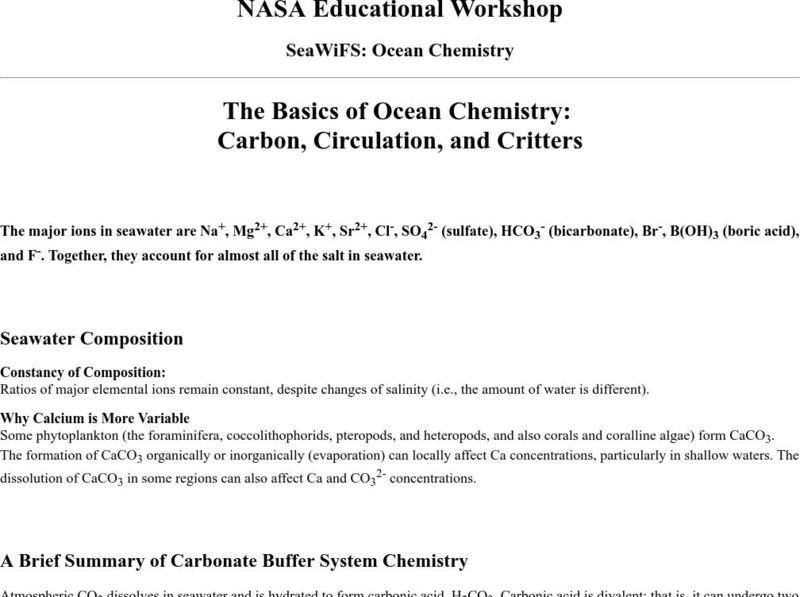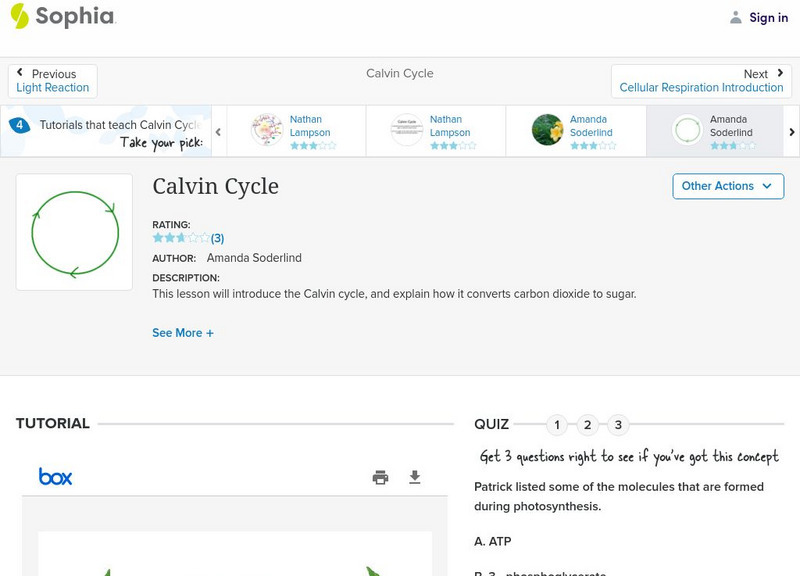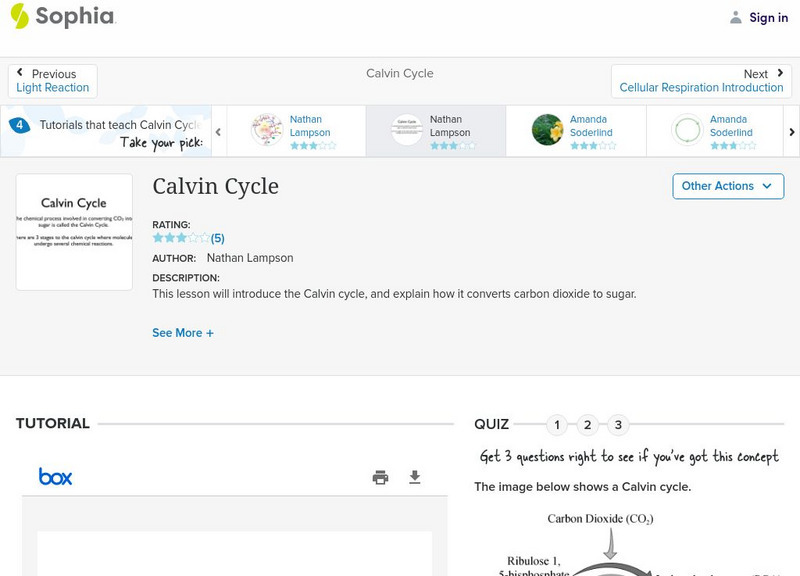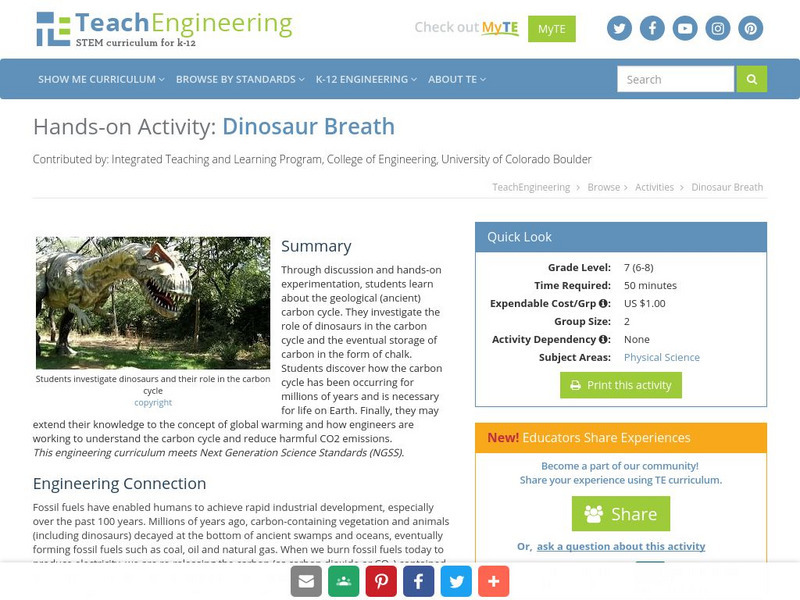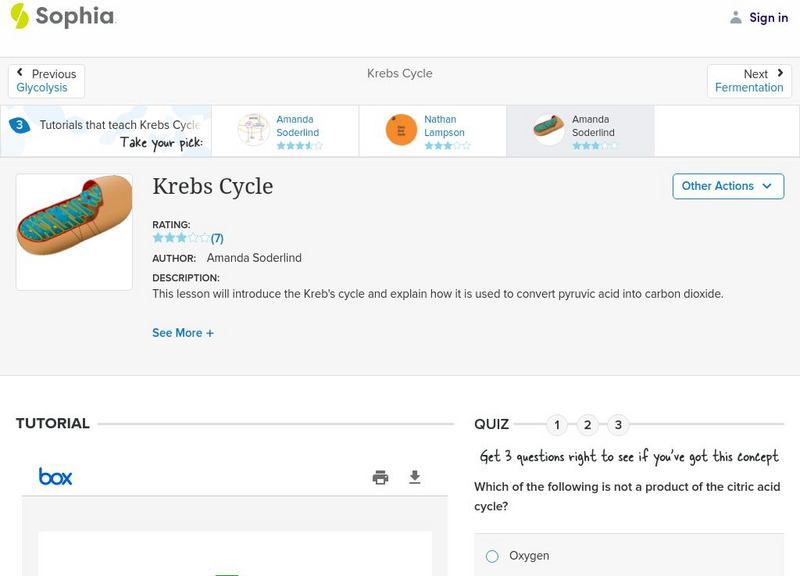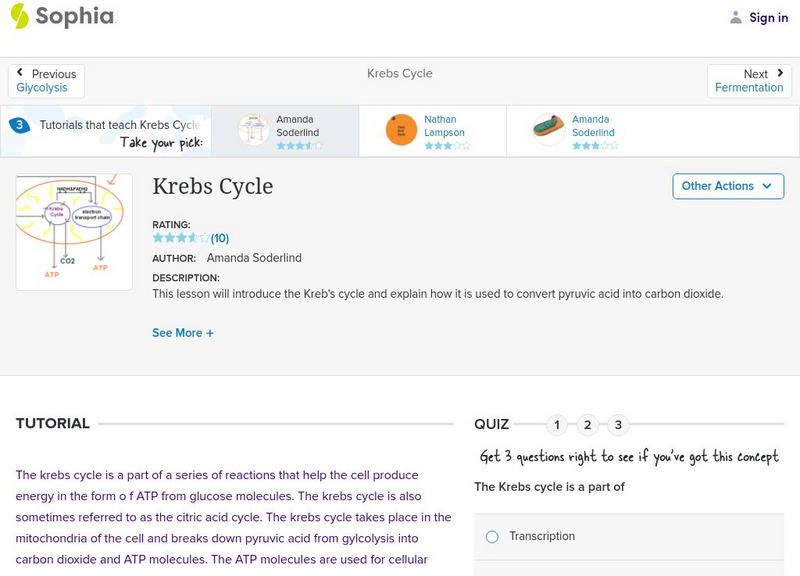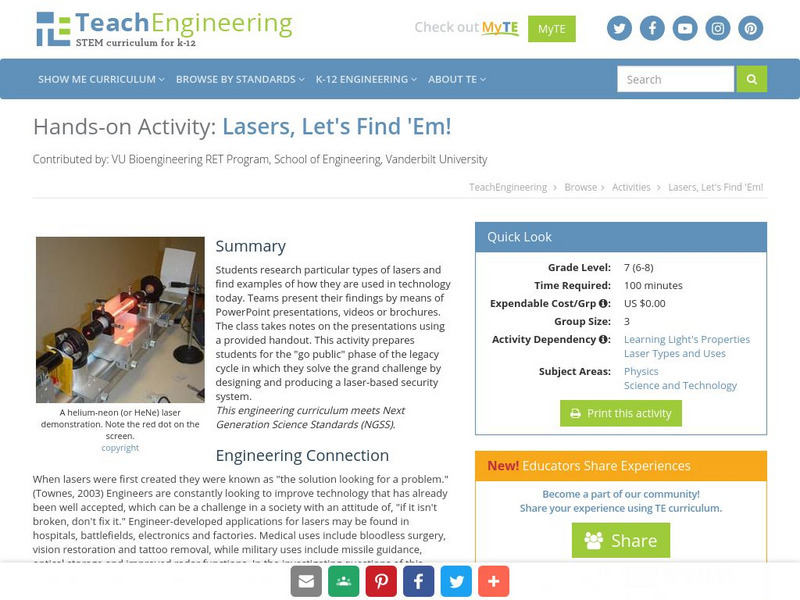Hi, what do you want to do?
Sophia Learning
Sophia: Calvin Cycle: Lesson 1
This lesson will introduce the Calvin cycle, and explain how it converts carbon dioxide to sugar. It is 1 of 4 in the series titled "Calvin Cycle."
Utah Education Network
Uen: Carbon Cycle Web Game
Students will explore a web game that identifies sources of carbon and the changes it goes through as it travels the carbon cycle.
Woods Hole Oceanographic Institution
Woods Hole Oceanographic Institution: Global Carbon Cycle
Interactive learning activity examines the global carbon cycle and describes the exchanges of carbon between the Earth's atmosphere, oceans, land and fossil fuels.
Other
Water on the Web
Water on the Web (WOW) is an advanced site allowing students to actively participate in data analysis from real research sites. Lesson plans on a range of topics are provided. There is also a tutorial for using Excel to graph WOW data.
Science Buddies
Science Buddies: Swimming in Acid: Understanding Ocean Acidification
The oceans are a precious natural resource, part of Earth's carbon cycle. But what happens if the oceans absorb too much carbon dioxide? Many scientists are concerned that the increased absorption of carbon dioxide is causing them to...
NASA
Nasa: The Basics of Ocean Chemistry: Carbon, Circulation, and Critters
An explanation of ocean chemistry, supported by illustrations, for example, of the global carbon cycle in the 1980s and the annual carbon dioxide flux. The concentration of nutrients in the ocean is discussed for its impact on marine...
Climate Literacy
Clean: Carbon Cycle
This activity from NOAA Earth System Research Laboratory introduces students to the current scientific understanding of the greenhouse effect and the carbon cycle. The activity leads them through several interactive tasks investigating...
Sophia Learning
Sophia: Calvin Cycle: Lesson 2
This lesson will introduce the Calvin cycle, and explain how it converts carbon dioxide to sugar. It is 2 of 4 in the series titled "Calvin Cycle."
Sophia Learning
Sophia: Calvin Cycle: Lesson 3
This lesson will introduce the Calvin cycle, and explain how it converts carbon dioxide to sugar. It is 3 of 4 in the series titled "Calvin Cycle."
Sophia Learning
Sophia: Calvin Cycle: Lesson 4
This lesson will introduce the Calvin cycle, and explain how it converts carbon dioxide to sugar. It is 4 of 4 in the series titled "Calvin Cycle."
National Geographic
National Geographic: Sources, Sinks, and Feedbacks
Students will learn about how the Earth's carbon cycle works, as they examine the relationship between levels of carbon dioxide and water vapor in the atmosphere and the temperature of the ocean's surface. Includes online student...
TeachEngineering
Teach Engineering: Dinosaur Breath
Through discussion and hands-on experimentation, students learn about the geological (ancient) carbon cycle. They investigate the role of dinosaurs in the carbon cycle and the eventual storage of carbon in the form of chalk. Students...
PBS
Pbs Teachers: Earth's Warming Climate: Are We Responsible?
We obviously don't want to feel responsible for the warming climate, but are we? In this lesson plan you will analyze CO2 data sets and study barriers involved in teaching about global climate change. PBS TeacherLine also provides a...
University Corporation for Atmospheric Research
Ucar: Atmospheric Science Explorers: Global Climate Change
A detailed overview of global climate change, with explanations of Earth's climate change, the carbon cycle, ecosystems, and greenhouse gases, and how the movements of matter and energy impact on climate. All information is reinforced...
Annenberg Foundation
Annenberg Learner: The Habitable Planet: Carbon Lab
An interactive lab simulation demonstrates the effects of increased carbon in the atmosphere and how that increase contributes to climate change. A data table for student records is available for download.
Science Museum, London
Science Museum: Climate Science Info Zone
Media-rich interactive explores Earth's climate, investigating what might be causing the climate to change and how to prepare for it in the future.
King's Centre for Visualization in Science
Explaining Climate Change: Lesson 7: Climate Feedback Loops
This is the seventh lesson in a series of learning modules on the topic of climate change. In this lesson, you will learn how several important feedback loops help drive and regulate earth's unique climate system and affect climate...
University Corporation for Atmospheric Research
Ucar: Climate Discovery Teacher's Guide: Investigating Climate Present
Lesson plans on the following: Carbon cycle: Carbon Dioxide Sources and Sinks, Nitrogen Cycle: Traveling Nitrogen, Ocean and Atmosphere: Make Convection Currents, Energy Cycle: Albedo
BBC
Bbc: News: Guide to Climate Change
The BBC offers an interactive guide to climate change, including a sliding scale depicting climate change from 1885 to 2099, animation which explores how the greenhouse effect works, and detailed diagrams exploring the carbon cycle, the...
Sophia Learning
Sophia: Krebs Cycle: Lesson 2
This lesson will introduce the Kreb's cycle and explain how it is used to convert pyruvic acid into carbon dioxide. It is 2 of 6 in the series titled "Krebs Cycle."
Sophia Learning
Sophia: Krebs Cycle: Lesson 3
This lesson will introduce the Kreb's cycle and explain how it is used to convert pyruvic acid into carbon dioxide. It is 3 of 6 in the series titled "Krebs Cycle."
Sophia Learning
Sophia: Krebs Cycle: Lesson 1
This lesson will introduce the Kreb's cycle and explain how it is used to convert pyruvic acid into carbon dioxide. It is 1 of 6 in the series titled "Krebs Cycle."
Texas Education Agency
Texas Gateway: Second Law of Thermodynamics: Heat Engines and Their Efficiency
By the end of this section, you will be able to state the expressions of the second law of thermodynamics; calculate the efficiency and carbon dioxide emission of a coal-fired electricity plant, using second law characteristics; and...
TeachEngineering
Teach Engineering: Lasers, Let's Find 'Em!
Students research particular types of lasers and find examples of how they are used in technology today. Teams present their findings by means of PowerPoint presentations, videos or brochures. The class takes notes on the presentations...









